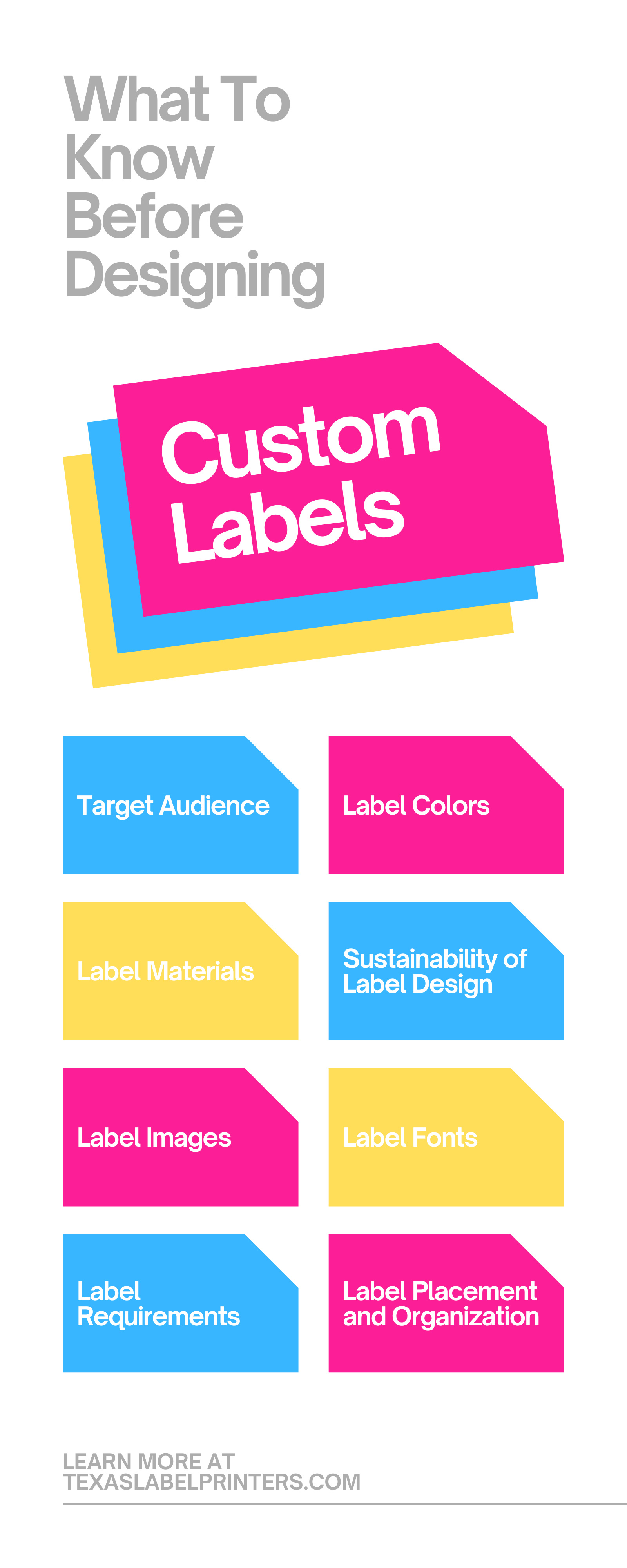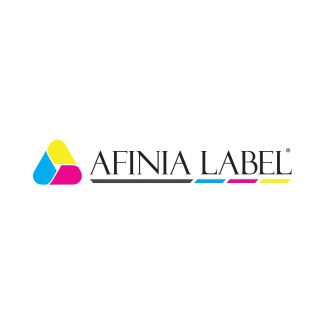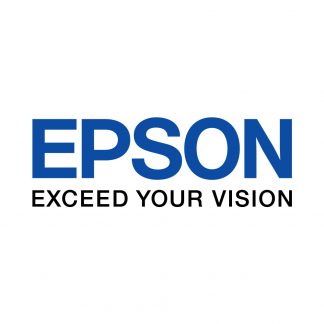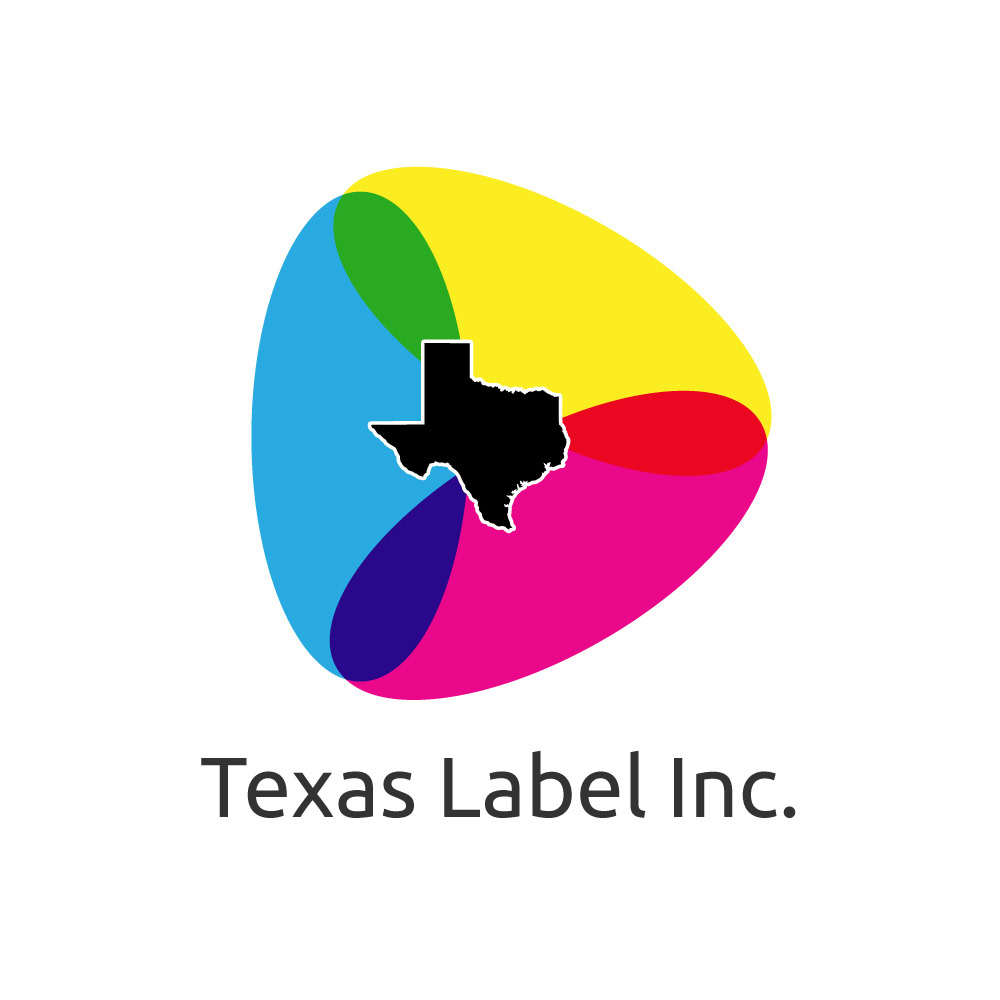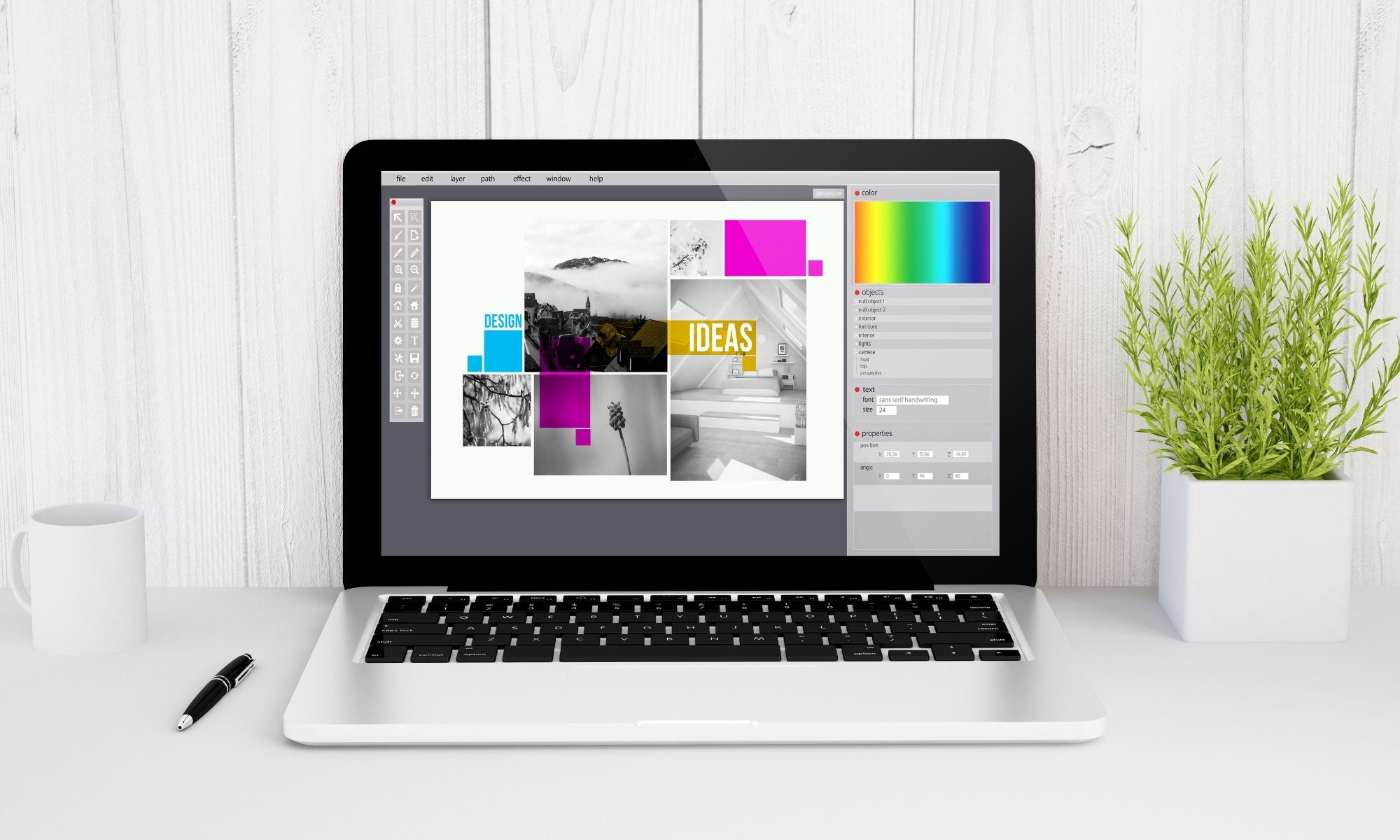
Designing custom labels for products can establish a strong brand image. However, before creating custom labels, businesses will need to consider several product packaging and marketing factors. Each of these factors affects the reception of products as well as customer interaction. In this blog, we’ll review what to know before designing custom labels to help businesses build high-quality and effective designs.
Target Audience
Before designing a custom label, businesses should first establish their target audience. The target audience is the intended customer of a company’s products.
Having a better understanding of a target audience will help brands recognize how to successfully market their products to that audience. Businesses should keep the trends of their target audience in mind as they customize labels to ensure that they meet customers’ needs. Starting the design process with this clarification will help inform the next preliminary designing decisions for customized labels.
Label Colors
Color has a direct and immediate impact on customers’ interactions with products. Since color creates such a significant influence on the reception of brand products, businesses must consider which palettes will work best for their labels.
Different colors evoke different thoughts and emotions among consumers. For example, yellow is a bright and energetic color, while blue is much calmer and more relaxing. Depending on the function of a product, businesses should choose colors that best reflect the merchandise being sold. For example, energy bars are better represented by bright yellow than light blue.
Businesses can also use colors in custom labels to establish brand recognition. Companies need to be mindful of competitor label colors and designs to prevent their products from appearing too similar or blending into store shelves.
Label Materials
Choosing the right materials for customized labels is critical for businesses to guarantee a high-quality and thoughtful brand design. Companies should first assess what type of label will best suit their products to find the best materials. For example, if merchandise requires additional health information or language translations on its labeling, dry-peel labels will provide the best spacing and design.
If businesses sell or store products in harsher climate conditions, these products should use more water-resistant and durable materials.
Proactively choosing label materials also means planning what printing equipment and machinery to use. It’s critical to use label materials that are compatible with the printing machinery used. For example, inkjet label rolls can be used with most high-quality printers.
Sustainability of Label Design
Before businesses design custom labels, they must consider how their labels and packaging can be more sustainable. Customers are drawn to companies that gear their product designs toward eco-friendly materials and packaging. Businesses may consider using label materials with bio-degradable properties or opting for soy-based inks. These simple adjustments in label design will gain a high appreciation from customers without affecting the quality of labels or packaging. These sustainable designs can also cut back on manufacturing waste.
Label Images
Deciding what images to use on products is also imperative to know before designing a custom label. Whether using graphic illustrations or photographs, label images make one of the most immediate impressions upon consumers.
Businesses should first consider what type of imagery best represents a brand or product. Whether companies are best represented by minimalistic graphic illustrations or colorful photographic features, it’s critical that these images accurately reflect a brand.
Once companies decide on label images, professional design can be executed to bring these images to life. Although businesses may choose to design their images, having artwork professionally designed ensures the best quality.
Since customers will associate label images with brand recognition, it’s best to invest in the highest-quality labeling imaging possible. These well-thought-out images and designs will appear more professional and memorable.
Label Fonts
Strategizing the font of a product label may seem unimportant compared to other considerations. However, customers are highly influenced by the fonts they see on product labels. When considering how to incorporate label fonts into a label design, businesses should focus on two main elements: legibility and tone.
The legibility of a font directly affects the success of a product’s label. While more wild and adventurous fonts may be memorable, consumers will quickly become frustrated and unimpressed by labels they cannot easily read or understand.
The tone of a font is also important to consider before customizing a product label. Simple changes in typography can emulate more modern, classic, or bold aesthetics. Businesses should decide what tone their font should communicate to customers before adding it to their customized label design.
Label Requirements
One of the most critical things to know before designing a custom label is the legal label requirements of a product. Food, dietary supplements, medication, and other products all follow strict standards and regulations for including important health and wellness information on labels. Businesses should review and ensure that all customized labels meet these label standards.
Companies should prioritize product information during label design while label images, font, and colors are adapted accordingly. By confirming that product labels contain all necessary information, businesses avoid disastrous label recalls and keep customers happy and healthy.
Label Placement and Organization
While establishing strong label colors, fonts, and images will better set a company’s products for success, none of these factors will matter if they are not properly organized and placed on product labels.
Most companies invest time in individual label considerations, but many also fail to ensure final customized labels are cohesive and appealing to consumers.
Taking time to strategize the placement of label fonts, colors, images, and information will help businesses avoid busy or overwhelming designs. Instead, these well-organized labels will catch the eyes of consumers with strong, effortless, and compelling designs.
The process of designing a custom label should be detailed, organized, and account for market and customer considerations. Before starting this design process, companies must review these different considerations in order to design the best possible labels for their products.
Here at Texas Label Printers, we offer the best in label printing equipment to make the design process stress-free and straightforward. To learn more about our different advice on industry label usage or to explore the most advanced printing equipment, browse our website.
